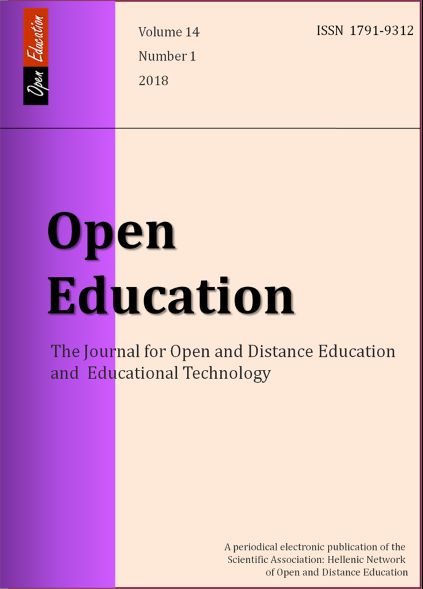Development of a Learner Autonomy Scale
Resumen
In distance learning educational context, learner autonomy is an element of research since the decade of 1970. Consequently, there are a lot of theoretical and empirical research of learner autonomy in distance learning trying either to conceptualizing it or to measure it. There are at least eight scales for measuring learner autonomy but all of them have been developed in a different socio-educational context and although it is not a mistake to be used in different socio-educational context it is more appropriate to develop a new one for the specific context. Therefore the aim of this study was to develop a learner autonomy scale that can be used in the context of the Open University of Cyprus and provide psychometric evidence of reliability and validity of the interpretation of the scores derived from the scale. First, the concept of learner autonomy was clarified through literature review. Second information on students’ beliefs and feelings about their learner autonomy was gathered. On the basis of the afore-mentioned procedures, an item pool was developed and was given to fourteen (14) university expertise of distance learning in order to evaluate the items and ensure content validity. Reliability and validity were then tested using exploratory factor analysis with a sample of two hundred and fiftyeight (258) undergraduate and postgraduate students from the Open University of Cyprus. Principal component analysis with oblimin rotation was used to determine the sufficient number of factors. The extraction of the number of factors was based on a) the theory; b) the scree plot test; c) eigenvalue-greater-than-one rule; d) the percentage of explained variance of each factor; e) the percentage of total explained variance and f) the number of factors that can be conceptually interpreted. Four dimensions of learner autonomy, namely, a) special ability to self-management, b) special psychological disposition, c) general ability to self-management and d) general psychological disposition, were revealed. The first factor explained 22.84% of the variance, the second factor 9.13% of the variance, the third factor 7.06% of the variance and the fourth factor 6.36% of the variance. Though some items in this scale were similar to those of other scales, factorial structure was different. Three different possible explanations proposed. The first was based on the differentiations of the educational environments the second on the fact that learner autonomy is a complex concept and therefore different conceptualizations of the term lead to different measurement scales and the third was based on the fact that all the scales measure perceived (form the student perspective) learner autonomy. Cronbach’s alpha for the overall scale was .85, for the factor of special ability to self-management was .82, b) for the factor of specific psychological disposition was .65, c) for the factor of general self-management capacity was .76 and for the factor of general psychological disposition was .48. Finally, the Pillai's Trace showed no statistically significant gender differences in the four factors
Article Details
- Cómo citar
-
- Número
- Vol. 14 Núm. 1 (2018)
- Sección
- Μέρος πρώτο / Section 1



